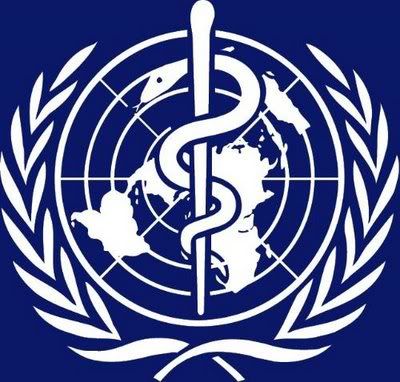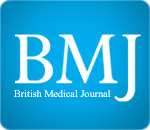Original content from the Mapping Pathways blog team
The January 2012 issue of
Sexually Transmitted Diseases – Journal of the American Transmitted Diseases Association has published data from a rectal health and behavior study whose findings “suggest some lubricant products may increase vulnerability to STIs”. The study concludes that “because of wide use of lubricants and their potential as carrier vehicles for microbicides, further research is essential to clarify if lubricant use poses a public health risk”. The paper has fueled a tremendous amount of discussion in HIV treatment and prevention communities around the world because such a link would have massive repercussions. Perhaps the title of the article also helped spark the dialogue:
“The Slippery Slope: Lubricant Use and Rectal Sexually Transmitted Infections: A Newly Identified Risk”.
The questions are popping up quickly. What does this mean? Do we begin to alter strategies? Do we wait for conclusive proof? How will the layperson interpret this? Use lubricants or not? Which ones? Water-based? Silicone? Oil-based? Healthcare and advocacy professionals are wondering whether this will impact the messages they communicate to people. One discussion forum grappling with these issues is the membership listserv run by IRMA (International Rectal Microbicide Advocates). The listserv has been the site of a lively conversation among individuals from various countries. And this discussion has been ongoing for a few years. IRMA has a Lube Safety Working Group, and has some great resources on this issue via their
blog.
“We need to be clear – there are only associations between lube use for anal intercourse and STDs. There is no proof that lube use causes increased risk. We simply don’t know that. Because we don't know, IRMA has long been advocating for a lube safety research agenda to fill in our gaps in the science and the evidence base,” says Jim Pickett, Director of Prevention Advocacy and Gay Men’s Health at the AIDS Foundation of Chicago, chair of IRMA, and a member of the Mapping Pathways team.
“Our key messages still hold true. 1) More research is urgently needed to explore if there is a link between lube use and acquiring HIV and/or rectal STIs. 2) It is unclear whether any particular type or brand of lube might increase, decrease, or have no effect on acquiring HIV and/or rectal STIs. 3) Using male or female condoms is still considered the best way to prevent acquiring HIV and STIs during anal intercourse. In addition, the use of condom-compatible lubes has been associated with a decreased risk of condoms breaking or slipping. 4) It is not possible at this time to recommend for or against using lubes if having anal intercourse without condoms. Lube use on its own is not a proven method of HIV or STI prevention,” explains Jim.
Read on for an interesting debate on various aspects of the study, prevention options, risk reduction, and risk elimination.
George Victor, a Project Coordinator and health educator who works with men who have sex with men (MSM) and other minority groups, describes the strategy his team is following: “For now, the data we have indicates that unprotected anal sex carries the highest risk of HIV infection, that latex condoms should always be used correctly with water-based lubrication, and that the rectum has a higher concentration of CD4 cells and a larger surface area than the vagina – which means higher opportunities for infection. Therefore, correct and consistent use of condoms and water-based lubricants, together with quarterly HIV testing and STI screening and treatment is the best bet we have today.”
Paul Whannel, a communications coordinator with the AIDS Project of Central Iowa, made an interesting point saying, “I question why there’s not a third option: If an MSM is unwilling to use barriers, use silicone lube – it’s at least potentially safer than water-based... A growing segment of MSM will simply ‘check out’ if you're only willing to talk barrier use. Shouldn’t we be talking risk reduction with those guys?”
“Don't forget that many of us gals will simply ‘check out’ as well!” adds Carrie E. Foote, PhD, an Associate Professor of Sociology at Indiana University-Purdue University who has been living with HIV for over 20 years. “I suspect most women and their male partners (especially those who exclusively have sex with women) rarely get any messages at all about anal intercourse. It was nice to see that half the participants in the study were women.”
“Paul, I hear what you are saying and agree with you in principle. I think that for prevention purposes, however, the most effective mechanical methods of prevention would involve some sort of barrier,” responds George. “Having said that, I agree that choice is important. We don’t say to guys that they MUST use a condom and water-based lube. We have a discussion, conduct risk reduction and assessment, and find solutions that are locally available and practical. Our role is to provide information, support, and very importantly options.”
“As rectal microbicide advocates, our whole reason for being is to help serve those for whom condoms don't work (for whatever reason). We are interested in the research and development of safe, effective, acceptable and accessible rectal microbicides for those very people,” points out Jim. “However, I think it gets tricky when we get to making a recommendation regarding lube use as harm reduction (any kind) in the absence of data.”
“What does risk reduction mean anyway?” asks Aditya Bondyopadhyay, an HIV advocate working in India. “Is it not a fact that the only sure method of avoiding risk of infection is to consistently and correctly use a condom in every instance of penetrative anal sex? I feel the emphasis should stay here. Other ways can and should be in addition to this, not stand-alone.”
“The only really ‘sure method of avoiding risk of infection’ is abstinence from anal and oral intercourse – which could be classified as risk elimination,” says Mark Hubbard from Tennessee in the US. “That’s pretty useless for most of the adults we’re trying to reach; everything else, including the consistent use of condoms, is ‘risk reduction.’ The effectiveness of all risk reduction methods varies and is dependent on the user. ALL of these methods (including abstinence and condom use) have advantages and disadvantages that are very real, and vary from person to person.”
Doreen Hardy highlighted the need for a different type of data: “We need better behavioral data – exactly how are people having anal sex? There are so many variables to consider beyond latex and lubes – the degree of sphincter relaxation before penetration, sexual position, concomitant drug use, frequency, etc. Behavioral data could trump the lubricant data. It is such a difficult subject for sexuality educators because it is hard to build rationale with so little evidence. The default educator has become porn and frankly they do a terrible job. Their objective is to edit for arousal value (usually by eroticizing power) not educational value so a lot of people think furtive, hard, and fast anal sex is the norm. Now that it has become a common part of the sexual repertoire of Americans, I think people are willing to talk about it without having it be shrouded in homophobia. Maybe someone can start with focus groups and move on to larger quantitative studies.”
“One striking thing is that this was mainly a study of people in committed relationships (56% of sex reported was with main partners) and not of casual sex. Casual/one-off sex only featured in less than 5% of encounters or 12% if you add in ‘acquaintances’. Most of the rest (83%) is between main or regular partners or ‘friends’. This makes the ‘the only thing we can say is to use condoms every time’ line even more incomplete as a response: We have to say it, but most research finds that condom use in long-term relationships, even serodiscordant ones, is an exception not a rule,” says a journalist specializing in HIV. “There are way too many uncertainties and confounders in this study to make any pronouncement on its basis … they didn't get into what people might be doing sexually that led them to choose one lube over another, or to use lube at all. I agree with Jim; we cannot make any recommendations about what lube to use on the basis of this study.”
A doctor summed up the overall mood perfectly at the end, “I'm thankful that a lot of the folks on this list are advocating for, conducting, and funding some of the very research we need to be able to answer the questions. I am awaiting the next wave of research with anticipation.”
[Content that is linked from other sources is for informational purposes and should not construe a Mapping Pathways position.]
 WASHINGTON, Aug 20 (Reuters) - A U.S. health panel may soon make HIV testing as standard a practice as checking cholesterol levels, a move that would fundamentally change how the virus is detected and treated.
WASHINGTON, Aug 20 (Reuters) - A U.S. health panel may soon make HIV testing as standard a practice as checking cholesterol levels, a move that would fundamentally change how the virus is detected and treated.
 WASHINGTON, Aug 20 (Reuters) - A U.S. health panel may soon make HIV testing as standard a practice as checking cholesterol levels, a move that would fundamentally change how the virus is detected and treated.
WASHINGTON, Aug 20 (Reuters) - A U.S. health panel may soon make HIV testing as standard a practice as checking cholesterol levels, a move that would fundamentally change how the virus is detected and treated.









